

Neptune is a talented musician, and music is a valued part of the Sailor Moon universe. This section will provide a little information into the Sailor Moon live-action musicals that were performed in Japan
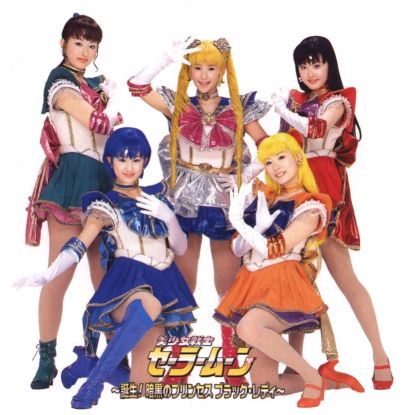
History
The Sailor Moon musicals (affectionately known to fans as SeraMyu), began in 1993 while the R arc of the anime was airing on TV in Japan. Elements from both the manga and the anime are woven into complex storylines mixed in with specially-composed songs (one of which, "La Soldier", would become the official Seramyu anthem), gorgeous visual effects and dazzling costumes.
Two musicals were produced each year - one in the summer and one in the winter. The musicals were to have ended in 1997, but the fans demanded more and to show the cast and crew's gratitude, the first Fan Appreciation Event (or "FanKan") was created in 1998 and progressed for every musical onward. The last known production was the Shin Kaguya Shima Densetsu Kaiteiban in 2005
Over 220 performers have participated in the various productions over the years, and have been seen by thousands of Sailor Moon fans. Outlets such as YouTube give Sailor Moon fans in other parts of the world a chance to experience these musicals, many with English translation subbed by talented people. As well, 13 soundtrack albums, 11 special compilations and one single were released by Nippon Columbia Records
Stages
The musicals are broken up into "stages". There are 3 "official" stages, but most fans in the Western world associate the stages with each of the four actresses that have played the lead role of Sailor Moon. For this site's purpose, the latter will be used
The four stages are as follows:
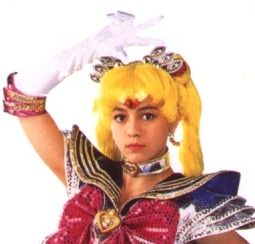 First Stage: Anza Oyama (1993-1998)
First Stage: Anza Oyama (1993-1998)
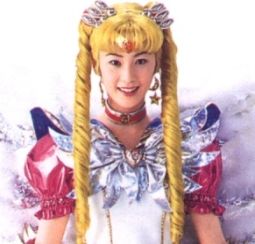 Second Stage: Fumina Hara (1998-1999)
Second Stage: Fumina Hara (1998-1999)
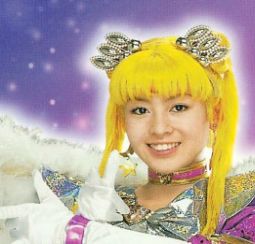 Third Stage: Miyuki Kanbe (1999-2001)
Third Stage: Miyuki Kanbe (1999-2001)
 Fourth Stage: Marina Kuroki (2001-2005)
Fourth Stage: Marina Kuroki (2001-2005)
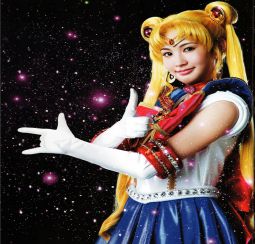 20th Anniversary Stage 1: Satomi Okubo (2013-2015)
20th Anniversary Stage 1: Satomi Okubo (2013-2015)
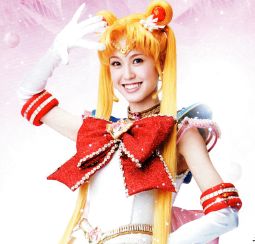 20th Anniversary Stage 2: Hotaru Nomoto (2016-2017)
20th Anniversary Stage 2: Hotaru Nomoto (2016-2017)
The official stages of the musicals are...
First Stage: Dark Gaiden Fukkatsu Hen to Eien Densetsu Kaiteiban (the entire Anza stage)
Second Stage: Shin Densetsu Kourin to Kakyuu-ouhi Kourin (includes all of Fumina's and Miyuki's productions as well as the majority of Marina's)
Third Stage: Shin Kaguya Shima Densetsu/Kaiteiban (Marina's final two productions)
20th Anniversary Stage 1: La Reconquista to Un Nouveau Voyage
20th Anniversary Stage 2: Amour Eternal and Le Mouvement Final
When a new actress comes into the Moon role, a ceremony is performed at her first FanKan event called "The Passing of the Princess Tiara". During this ceremony, the previous Moon actress passes a small tiara on to her successor and also provides words of advice and wishes of good luck in upcoming productions
Glossary
* FanKan: Short for "Fan Kansha", it is an event for the fans to meet the cast and get a preview of the upcoming production
* Kaiteiban: A revision in the production, featuring the addition of new dialogue, cast members, sight gags and songs
* Omake: Extra features on a video of the production such as audio commentary
* Service Number: A song (or songs) performed after the curtain call, somewhat like an encore
* Senshuuraku: The final day of performances for the current production. Also marks the graduations of members of the cast, who are given more focus in that specific production and are given a special send-off at show's end
* Graduation: When one or more members of the Senshi actors leaves the show
Trivia
* Anza and other first-stage SeraMyu actresses were members of the idol group Sakurakko Club and the seiyuu group MoonLips, who performed "Moonlight Densetsu" for the S and SuperS seasons of the anime
* Miyuki Kanbe (Moon #3) performed the 2 main themes for the first season of "Mermaid Melody: Pichi Pichi Pitch": Taiyou no Rakuen ~Promised Land~ and Rainbow Notes
* The third-stage musicals (Last Dracul, Transylvania no Mori, Death Vulcan) as well as the (Shin) Kaguya Shima Densetsu of the second and fourth stages and the fourth-stage Ai no Sanctuary are the only ones that don't follow a storyline set in the Sailor Moon anime or manga
* Ankoku no Princess Black Lady was the only musical where none of the Senshi actresses graduated
* The fourth-stage musicals Starlights Ryusei Densetsu and its Kaiteiban, Kakyuu-ouhi Kourin, are loosely based on the first-stage musicals Sailor Stars and Eien Densetsu, though Kakyuu-ouhi is deemed by fans not to be a true Kaiteiban
* Marina Kuroki (Moon #4) was only 12 years old when she first played the role of Sailor Moon. She is the second-longest running Moon after Anza
* Chieko Kawabe (Mercury #5) went on to play Naru Osaka in the Sailor Moon live action TV series that ran from October 2003 to September 2004
* Mao Kawasaki (Chibimoon #1) returned after playing ChibiChibi in Eien Densetsu to play Black Lady in Ankoku no Princess Black Lady at the age of 14
* Only three actresses have worked with all 4 Moon's, the best-known ones being Hikari Ono and Ado Endou
* The most-cast Senshi role is Chibimoon, 13 different actresses portrayed the character across all stages (sometimes double-cast). Uranus and Moon were the least cast, with 4 actresses for each role
* In the 20th Anniversary Stage, all the roles are played by women